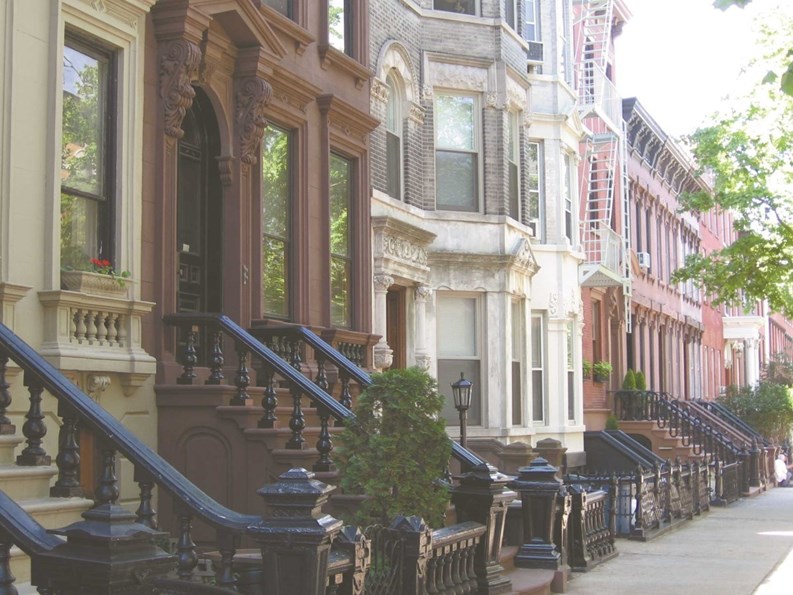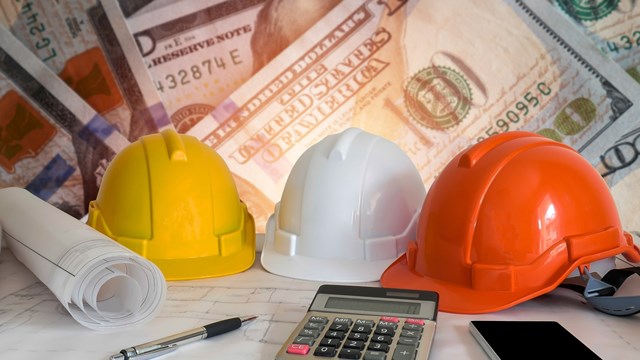Tucked away in the northernmost top of Brooklyn, Greenpoint is a historic New York neighborhood bordered on the southwest by Williamsburg at the Bushwick inlet, on the southeast by the Brooklyn-Queens Expressway and East Williamsburg, on the north by Newtown Creek and Long Island City at the Pulaski Bridge, and on the east by the East River.
“Greenpoint is a bit of a hybrid,” says Herbert H. Kliegerman, a broker with North Brooklyn Realty, who specializes in the area. “It's very close to the bustle of the city and of Williamsburg, but it also resembles a quiet maritime village. Franklin Avenue is becoming a shopping and fashion hotspot, while Manhattan Avenue is the neighborhood's busy commercial corridor, with lots of shops and restaurants. Greenpoint is nestled between McCarren Park and Newtown Creek/Long Island City and some day in the not too distant future, the waterfront itself will be a wonderful attraction.”
Sally Marshall, director of development at the Brooklyn Historical Society, offers that Greenpoint has a wonderful history and continues to thrive as a cohesive urban village. “Greenpoint is a diverse neighborhood with a strong history of mariners, immigrants and industry,” she says. “Originally farmland, the turn of the century brought many eastern European immigrants as well as waterfront-related industry. Today the neighborhood is still populated by many multi-generational Polish and Eastern European families, as well as an eclectic mix of artists, musicians and other creative thinkers.”
Early History
Originally, Greenpoint’s lush coastal peninsula was a rich fishing, farming and hunting ground for the Lenape tribe, which were forced to sell the land to the Dutch in 1638.
It was back in 1642 when Greenpoint’s first European colonists settled along Newtown Creek, near the tribal village of Mespaetches. The Dutch called the area Green Point because of the grassy projection of land jutting into the East River.
“Greenpoint likely received its name because of its verdant appearance when viewed from the East River,” says Kliegerman. “Additionally, the original Dutch name was Hout Hoek, or Wood Point, which could have been translated into Greenpoint at a later date.”
In a Brooklyn Historical Society (BHS) guide, historian Marcia Reiss explores the history of the area and explains why Greenpoint was always considered a good place to live.
“It was a community of blue-collar and middle-class families who shared the rich traditions of their immigrant cultures,” she says. “Whether their accents were Irish, Polish, Italian or Brooklynese, Greenpointers considered themselves part of the same close-knit community.”
Building Up
While more than 90 percent of houses in the area were built before World War II, many crafted by 19th century ship builders, most of these homes were well-kept and are still occupied today.
Reiss feels that Greenpoint’s historic Milton Street is a prime example of what makes the area special. Although it is only two blocks long, it sits in the heart of Greenpoint’s landmark district and is a favorite among Brooklyn residents.
“With a magnificent church at one end, old warehouses at the other, and some of the city’s finest 19th century homes in between, Milton Street illustrates Greenpoint’s compelling mix of urban contrasts,” she describes. “The mix of industrial and residential buildings is remarkable—for its historic character, its concentration of uses and its energy.” Many historic churches are in the area, with some being the oldest in all of Brooklyn.
Neighborhoods in Greenpoint have a variety of generations living together and although it is sometimes called “Little Poland” because of its large Polish population, many other nationalities have made the neighborhood a very diverse community in recent years. That can be seen in the churches as well.
“The architecture may be English and American, but look at the signs announcing the hours of worship. They are written in Polish, Spanish, Russian and even Arabic,” Reiss says. “They are the hallmarks of an urban ethnic village.”
Both Polsko Amerykanski and Iglesia Cristiana are 19th century churches that sit on Meserole Street.
“Built in 1865 on Kent Street, the Church of the Ascension takes you back to a time when Greenpoint was a rural village,” Reiss says. “A few blocks away is Congregation Ahavas Israel, founded by German Jews in 1893.”
Shipbuilding Center
In 1866, the largest wooden ship of its time—the Great Republic—was built at Henry Steers’ Greenpoint shipyard, which brought a great deal of attention to the area.
“From the beginning, Greenpoint’s great shipyards were as involved in producing iron as in building wooden ships, and they turned out some of the 19th century’s greatest industrial achievements,” Reiss explains.
In 1859, the Sneeden and Rowland Shipyard produced the huge iron pipes—seven and a half feet wide and more than a quarter of a mile long—that carried drinking water over the High Bridge Aqueduct above the Harlem River. In 1871, Eckford Webb and George Bell’s shipyard created the massive caissons for the Brooklyn Bridge.
Ask lifelong Greenpoint resident Janice Laulettta-Weinmann where the notable Civil War ship, the U.S.S. Monitor, was built and she is quick to correct people that the Union’s first ironclad vessel wasn’t constructed at the Brooklyn Naval Yard, but at the Continental Shipyard, which was located on West Street in Greenpoint.
That’s why Laulettta-Weinmann established the Greenpoint Monitor Museum, to recognize the importance of the shipyard in America’s history. Currently, the museum operates as a traveling museum through its “Road Show” whose instructors visit local schools dressed in Civil War uniforms to teach youngsters about the importance of the area.
Greenpoint Living Today
As the housing boom was happening throughout New York between 2004 and 2008, many in the city found that they could get more value for their housing dollar in Brooklyn, and Greenpoint became a very desirable destination. Large numbers of new condos were constructed during this period, and most of these have already been sold into the marketplace or have been converted into rental units. Real estate prices have come down a bit, understandably, in the past 18 months, but brokers say condos in the area are still doing well.
“There are some new developments just opening now, as well as limited condo resales,” Kliegerman says. “Prices in Greenpoint are certainly lower than Manhattan and 10 to 20 percent below Williamsburg, and because the neighborhood isn't overbuilt, prices have been relatively stable. Greenpoint also has a nice range of housing types, including townhouses, brownstones and small multi-unit buildings, but there are not many co-op buildings in the area. All in all, the market has rebounded a bit from the past few years. It's healthy, with fairly priced units selling quickly. Buyers and sellers who have realistic expectations are doing well.”
Condo prices in Greenpoint depend on age, proximity to the water and whether or not they are in a historic neighborhood.
“Most of the newer buildings or recently converted condo buildings are one-bedrooms generally on the market in the $300,000 to $450,000 range, while two-bedrooms are in the $500,000 to $750,000 range,” Kliegerman says. “These are some great values compared to the rest of the city.”
Looking ahead, Kliegerman believes that 10 years from now, the city is going to be an ever more fascinating place to live. “Prices in Greenpoint have stabilized and are experiencing mild appreciation. We think the neighborhood is one of the city's most promising going forward,” Kliegerman says, “There is so much land on the waterfront that is underutilized, as well as new transportation links being explored.”
If you're interested in seeing and learning more about Greenpoint, Marshall says that The Brooklyn Historical Society offers a walking tour that takes you up and down Manhattan Avenue, the neighborhood's commercial spine, winding northward through the historic district and along the industrial waterfront, then southward to McCarren and McGoldrick Parks. “It’s a wonderful tour,” she says. “There is a lot to see and experience in Greenpoint.”
Keith Loria is a freelance writer and reporter, and a frequent contributor to The Cooperator.







Comments
Leave a Comment